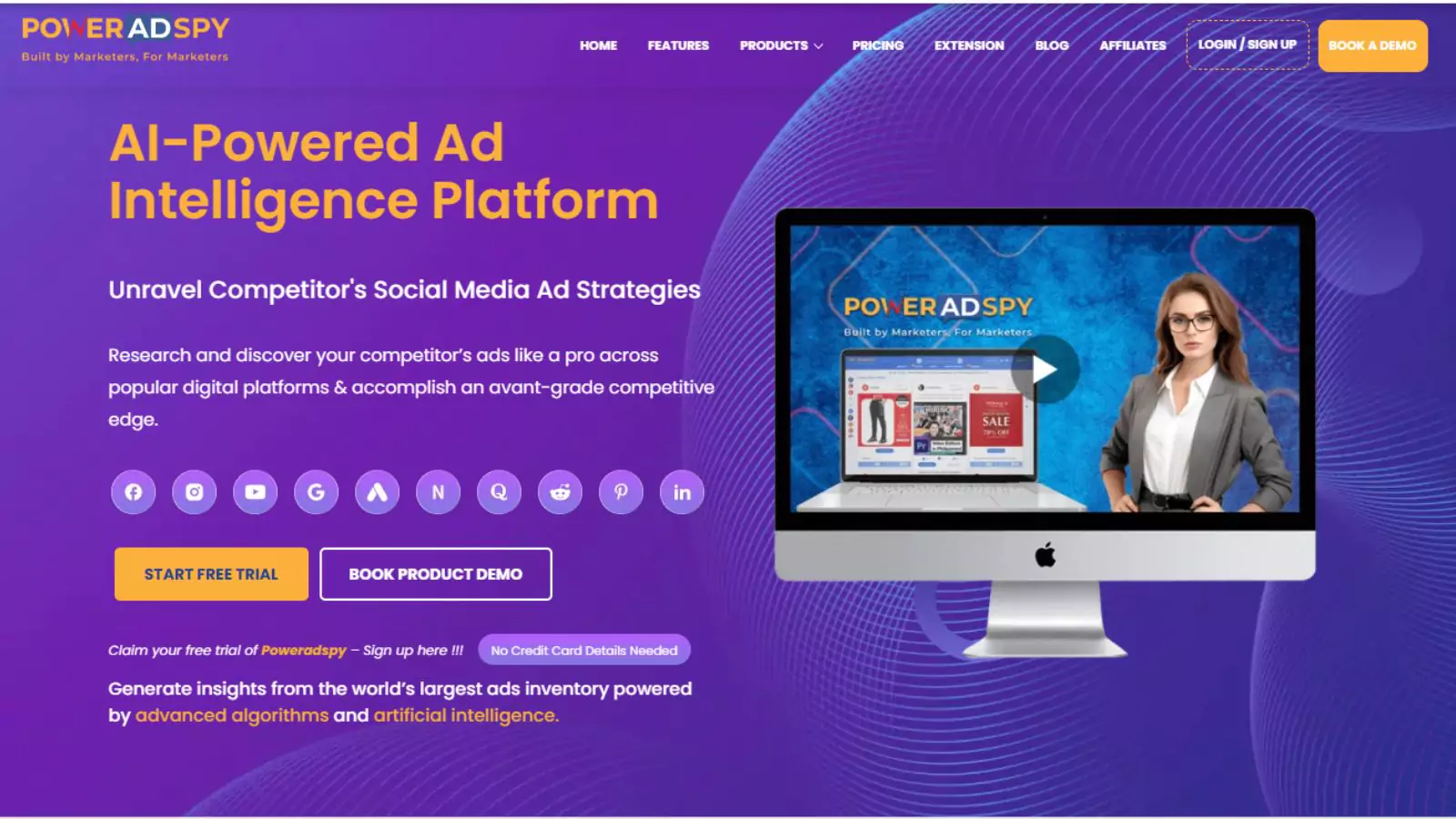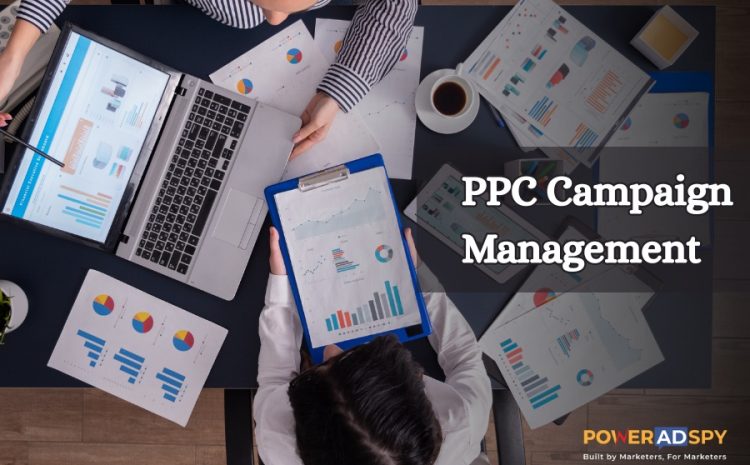How To Use PPC Campaign Management For Growth?
Generating high-quality leads quickly requires a strategy that offers both precision and control. That’s where PPC campaign management becomes a powerful tool for growth. It helps drive targeted traffic, boost conversions, and increase return on investment with measurable results.
Rather than waiting for organic visibility, businesses use paid marketing to appear in front of prospects already searching for their products or services. With the right setup, it gives complete control over budget, performance, and messaging, turning advertising into a reliable engine for scaling.
Listen To The Podcast Now!
What Is PPC Campaign Management?
It refers to the structured process of planning, executing, monitoring, and optimizing pay-per-click advertising campaigns. This includes platforms like Google Ads PPC, Bing Ads, Facebook Ads, and more. The main goal is to ensure every dollar spent produces optimal results.
It covers multiple aspects: keyword research, ad creation, landing page optimization, bid strategy, and performance tracking. What is PPC campaign management if not a highly tactical and performance-driven effort? Businesses use it to consistently drive leads, website traffic, and revenue.
Many brands turn to expert PPC campaign management services to handle the complexity and maintain competitiveness. A skilled team monitors trends, refines copy, and implements budget adjustments to ensure sustainable growth.
How Does PPC Campaign Management Work?
It runs on a structured flow that ensures every ad dollar delivers value. From initial research to continuous optimization, each step holds strategic importance.
1. Keyword and Audience Research
The process starts by finding high-intent keywords that match what potential customers search for. Long-tail keywords help reduce competition and attract better leads. Tools like Google Keyword Planner and SEMrush make this easier. Advertisers also set target demographics, locations, and interests to reach the right audience.
2. Creative Development
Once targeting and keywords are finalized, the next step focuses on ad creation, which plays a key role in capturing user attention. Advertisers write clear, compelling ad copy and craft strong headlines that align with user intent. Engaging visuals support display and social ads, while direct call-to-action (CTA) phrases encourage users to take the next step.
3. Auction and Ad Placement
PPC platforms use real-time auctions to decide which ads appear and in what position. Several factors influence this placement. The bid amount reflects the maximum cost an advertiser is willing to pay per click. Quality Score measures the relevance of the ad copy, keywords, and landing page. The expected click-through rate predicts performance based on past engagement. Advertisers with higher Quality Scores often enjoy better visibility at a lower cost-per-click, making ad relevance and performance critical to success.
4. Campaign Launch and Monitoring
After launch, ongoing performance tracking becomes essential. Advertisers monitor key metrics such as impressions, clicks, click-through rate (CTR), and conversions to assess campaign effectiveness. Based on this data, they adjust bids at the keyword level to improve results. Low-performing ads and duplicate segments are removed to prevent budget waste and keep the campaign focused on what works.
5. Ongoing Optimization
It continues well beyond the initial launch. Real results come from ongoing refinement and optimization. Advertisers run A/B tests on different ad copies, creatives, and landing pages to identify the most effective combinations. They add negative keywords to prevent ads from showing on irrelevant searches, which helps protect the budget. High-performing keywords receive increased focus and investment, while underperforming areas are scaled back to reduce waste and improve overall efficiency.
Common Challenges In PPC Campaign Management
While PPC is powerful, it presents challenges. One major issue is budget wastage ads may attract clicks from users who never convert. Without proper targeting and keyword exclusion, spend can spiral without returns. Ad fatigue affects performance. Prospects see the same ads multiple times, leading to lower engagement. A stagnant campaign stops growing. Quality Score declines when ads or landing pages become irrelevant, further driving up costs. PPC campaign managers often struggle with tracking. Broken conversion tags or misconfigured analytics prevent teams from making informed decisions. That’s where expert PPC campaign management services create real value.
Best Practices For Effective PPC Campaign Management
Winning in PPC requires a balance of planning, execution, and adaptation. Follow these proven tactics to improve performance and ROI:
1. Define Clear Objectives
Establish specific goals such as:
- Generate leads
- Increase e-commerce sales
- Drive app installs
- Book consultations or demos
Clarity shapes campaign direction.
2. Create Tight Keyword Themes
Use separate ad groups for each product, service, or intent level.
- Group similar keywords together.
- Match ad copy with the exact keyword theme.
3. Use Negative Keywords
Exclude irrelevant search terms to protect the budget.
- Review search term reports regularly.
- Remove keywords that drive unqualified traffic.
4. Write High-Impact Ad Copy
Make your offer clear and valuable.
- Focus on benefits, not just features.
- Use emotional triggers or urgency-based messaging.
5. Optimize Landing Pages
A great ad can’t fix a weak landing page.
- Align page content with the ad promise.
- Add trust signals: reviews, certifications, and guarantees.
- Use short forms and clear CTAs for better conversion rates.
6. Retarget for Higher ROI
Visitors often need multiple exposures before taking action.
- Use remarketing lists to re-engage visitors.
- Tailor messaging based on user behavior or funnel stage.
7. Review Data Regularly
Weekly reports help spot trends early.
- Look beyond surface metrics like CTR.
- Concentrate on metrics like conversion rate, return on investment, and cost for each conversion to measure true campaign effectiveness.
8. Adjust Budget and Bids Intelligently
Redirect the budget toward campaigns that perform.
- Lower bids where CPC outweighs ROI.
- Use smart bidding strategies based on business goals.
How To Use PPC Campaign Management Tools Efficiently?
The tools enhance efficiency and ensure precision. Google Ads Editor and Microsoft Advertising Editor make bulk campaign edits easier, while platforms like SEMrush and SpyFu deliver deep keyword research and competitive insights.
With the right tools, advertisers uncover high-performing search terms, evaluate competitor activity, and identify ad opportunities. Ad spy tools allow marketers to analyze how competitors run their campaigns.
Powerful software can automate bidding, pause underperforming ads, and suggest optimizations based on performance trends. Effective PPC campaign management tools act as an extension of the marketing team.
PPC Campaign Management For Different Platforms
PPC strategies must align with each platform’s strengths. Google Ads targets users with strong buying intent through search ads triggered by specific queries. Display ads, in contrast, reach users across websites based on browsing behavior.
Facebook Ads prioritize audience segmentation, leveraging interests, demographics, and behaviors to define reach, making visual content more impactful. Instagram and LinkedIn adopt similar models, with Instagram favoring creative visuals and LinkedIn excelling in professional B2B targeting.
E-commerce brands thrive on platforms like Google Shopping and Instagram Ads, while B2B marketers often turn to LinkedIn for high-quality leads. Tailored PPC campaign management is essential to match platform dynamics.
For optimal performance, marketers adjust ad creatives, budget allocations, and bidding strategies for each channel. PPC ad campaigns deliver better results when aligned with user intent and product relevance.
Read More!
How To Maximize Your Google Ads PPC Campaign?
Google Ads Editor: How To Master Campaign Management?
Measuring The Success Of Your PPC Campaigns
Results define the success of any PPC campaign. To understand what works and what needs improvement, advertisers rely on specific performance metrics. These metrics provide insight into campaign effectiveness and help guide smart decisions that lead to better ROI.
Click-Through Rate (CTR)
CTR (Click-Through Rate) indicates the percentage of viewers who click on your ad after seeing it. A higher CTR typically means your ad is relevant and engaging to your target audience. A high CTR usually indicates that your ad is relevant and compelling to your audience. If CTR is low, your ad might not align with user intent, or the messaging may lack clarity. Improving headlines, copy, or targeting often leads to higher CTR.
Cost Per Click (CPC)
CPC tells you how much you’re paying for each click on your ad. A lower CPC means you’re getting traffic more affordably. If CPC rises, it could signal increased competition or a drop in Quality Score. Keeping CPC under control ensures you don’t overspend on low-value clicks.
Conversion Rate
This metric shows how many users complete a desired action after clicking an ad, such as making a purchase or submitting a form. If click-through rates are high but conversions are low, it often points to problems with the landing page, offer, or overall user experience. Refining the page layout, messaging, and call-to-action can lead to better conversion performance.
Quality Score
Quality Score, assigned by platforms like Google Ads, measures the relevance of your ad, keywords, and landing page. Higher scores lead to lower CPC and better ad positions. A low-quality Score can hurt visibility and raise costs. To improve it, focus on ad relevance, strong keyword targeting, and well-optimized landing pages.
Return on Ad Spend (ROAS)
ROAS (Return on Ad Spend) measures the revenue generated for every dollar spent on online advertising. A ROAS of 4:1 means your business earns $4 for every $1 invested in ads. This metric is essential for evaluating profitability. A low ROAS often signals issues with targeting, ad creatives, or the conversion funnel that need to be addressed.
It relies heavily on accurate tracking and reporting. Tools like Google Analytics, Google Tag Manager, and platform-specific dashboards provide detailed insights into user behavior and ad performance. Weekly or monthly performance reports help identify trends, monitor budget efficiency, and guide improvements. Campaigns backed by data stay agile, competitive, and consistently aligned with business goals.
Read More!
Online Advertising: Everything You Need To Know About
Tips To Scale Your PPC Campaign Management In 2025
Scaling requires a balance between spend, efficiency, and reach. Start by increasing the budget for campaigns with high ROAS. Expand keywords, targeting options, and ad variations based on what already works.
Automation tools help manage growing campaigns. Smart bidding strategies, audience expansion, and dynamic ad formats boost scalability. Geo-targeting helps break into new markets without wasting spend.
Remarketing lists create better results over time. Ads aimed at previous visitors often deliver higher ROI. PPC campaign management becomes scalable when growth aligns with data.
How Can PowerAdSpy Help You Improve PPC Campaign Management?
It demands insight, speed, and strategy. PowerAdSpy helps advertisers meet all three by offering powerful ad intelligence software designed to track high-performing ads, analyze competitors, and uncover platform trends in real time. It functions as a reliable ad spy tool that transforms raw data into actionable opportunities.
With PowerAdSpy, advertisers no longer guess what works; they study proven campaigns and reverse-engineer success.
1. Filter by Ad Positions
PowerAdSpy allows users to filter ads based on their position, such as News Feed or Sidebar. This insight helps identify which placements perform best within your niche, improving conversion-focused design decisions.
2. Complete Ad Visibility
Marketers gain direct access to live ad posts through the platform. This feature offers full transparency, allowing teams to review real-time engagement, user comments, and public sentiment without leaving the dashboard.
3. Access to Global Ad Data
PowerAdSpy holds a vast database with millions of ads from over 100 countries. With thousands of fresh ads added daily, marketers can monitor international trends and discover what works across different regions.
4. Targeted Search Capabilities
Precision targeting becomes easier with PowerAdSpy’s advanced filters. Users search ads based on keywords, competitor domains, or advertiser names, helping teams identify winning strategies and top-performing rivals in any industry.
5. Bookmark High-Performing Ads
As marketers explore successful campaigns, they can bookmark ads with a single click. This creates a personal inspiration library, saving time and eliminating the need to repeat searches.
6. Smart Search Algorithm
The platform’s intelligent search engine allows deep filtering based on likes, shares, and comments. This lets users focus only on ads with proven engagement metrics.
7. Engagement-Oriented Insights
PowerAdSpy offers rich analytics on ad interactions, likes, comments, shares, and overall engagement. These details reveal which ads resonate most with audiences and why.
8. Access to Image and Video Ads
Advertisers can explore both image-based and video ad formats. PowerAdSpy’s growing collection of social video ads provides a clear direction for creating high-performing visual content. Downloading and analyzing successful creatives becomes quick and seamless.
9. GEO-Targeted Ad Intelligence
Understanding regional performance is critical. PowerAdSpy delivers detailed GEO-targeting insights, showing exactly where competitors focus their efforts and where conversions happen more frequently.
10. CTA-Based Sorting
Call-to-action effectiveness often determines an ad’s success. With CTA-based sorting, advertisers discover which CTAs work best within their industry, allowing for better testing and refinement in their own PPC campaigns.
11. Shopify Ad Discovery
For e-commerce brands, PowerAdSpy offers a unique advantage in the discovery of high-performing ads from successful Shopify stores. Users gain access to full engagement metrics, offering a competitive edge in the online retail space.
12. Keyword-Based Ad Search
Advertisers can perform searches based on exact matches or broad keywords. This flexibility helps marketers uncover deep insights for any product category or service niche.
PowerAdSpy combines the strengths of an ad spy tool, ads spy system, and advanced ad intelligence software to support better decisions in every stage of PPC campaign management. From competitor tracking to creative inspiration and performance benchmarking, this tool makes it easier to scale and succeed.
Final Thoughts
It serves as a foundation for modern growth marketing. Companies that embrace data-driven strategies gain control over lead generation, customer acquisition, and online visibility.
With strong fundamentals, consistent testing, and advanced tools like PowerAdSpy, businesses build smarter campaigns. Whether launching a new product or scaling an existing offer, expert PPC campaign management delivers real results.
FAQs
- What is PPC campaign management?
PPC campaign management is the strategic process of planning, launching, and optimizing pay-per-click advertising campaigns across platforms like Google Ads, Facebook Ads, and Bing Ads. It involves selecting the right keywords, creating ad copy, adjusting bids, analyzing performance, and improving ROI. Effective PPC campaign management helps businesses drive targeted traffic and boost conversions.
- Why is PPC campaign management important for growth?
It ensures that ad spend produces measurable results. It helps brands reach high-intent users, control their budgets, and refine messaging to drive consistent growth. Without strong management, campaigns often suffer from wasted spend, poor targeting, and low returns.
- What’s included in PPC campaign management services?
PPC campaign management services typically include keyword research, competitor analysis, ad creation, bid strategy, A/B testing, performance tracking, and campaign optimization. These services are handled by experts who monitor trends, make data-driven decisions, and continuously refine the strategy to ensure profitability.






